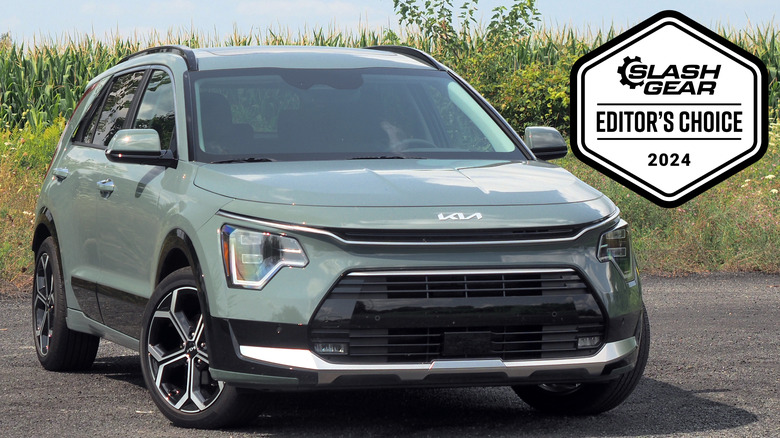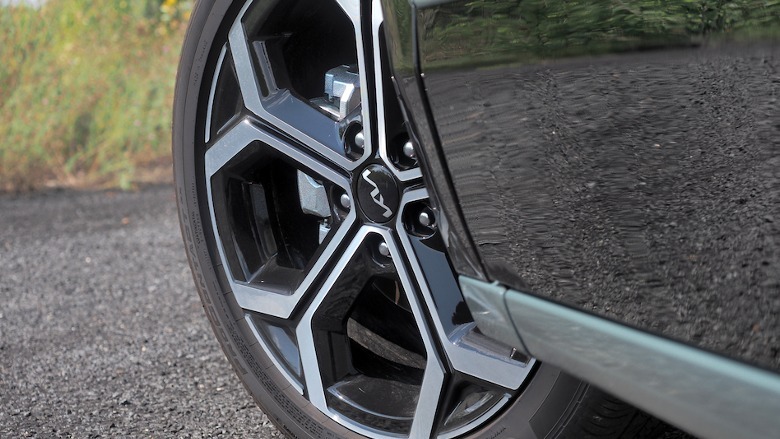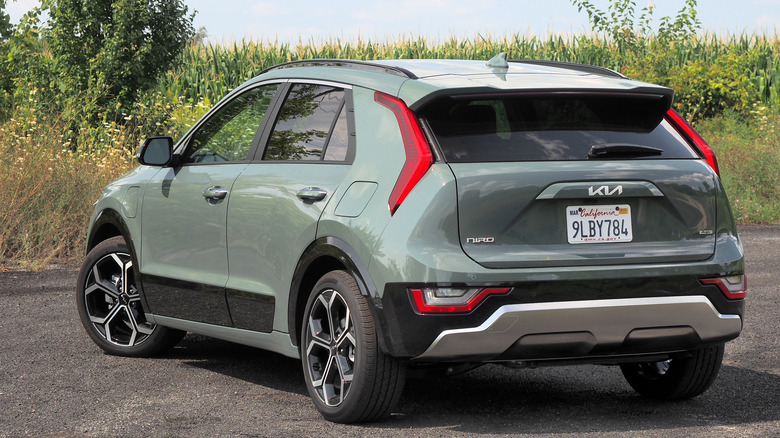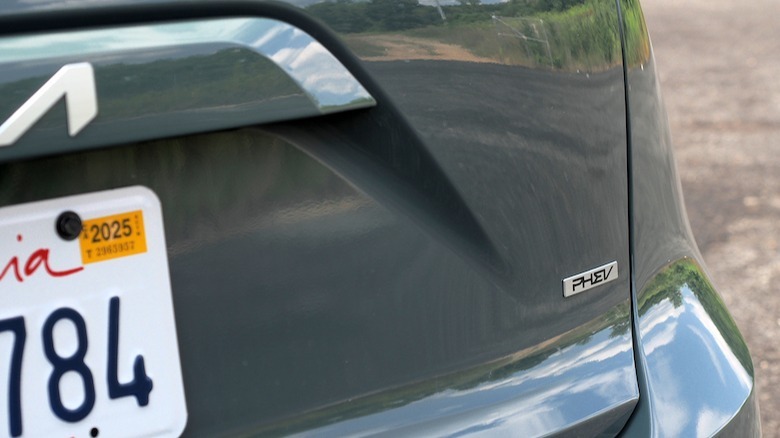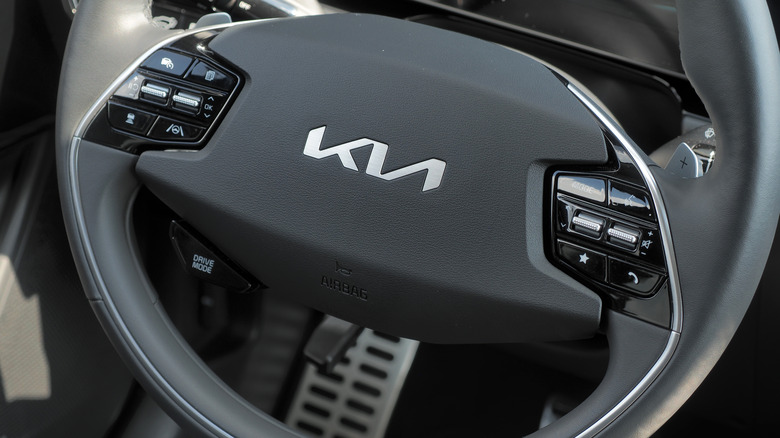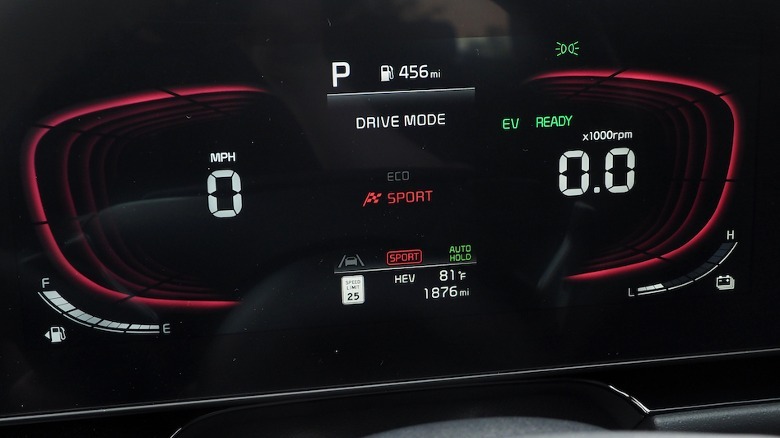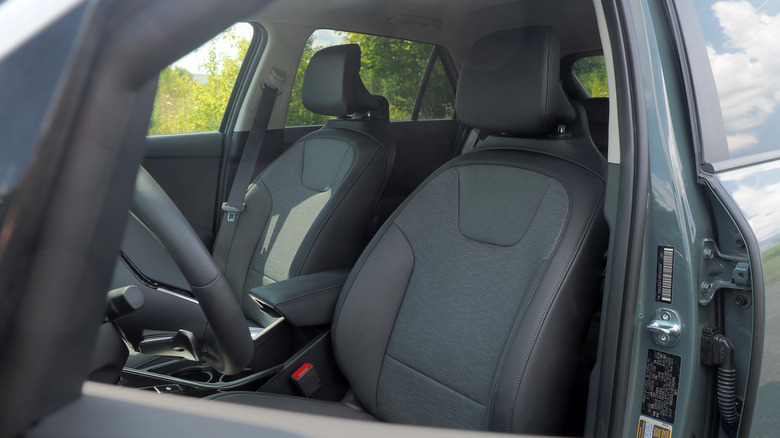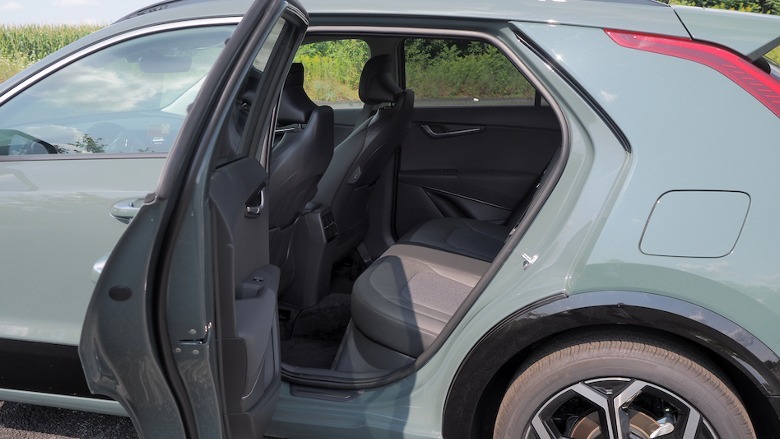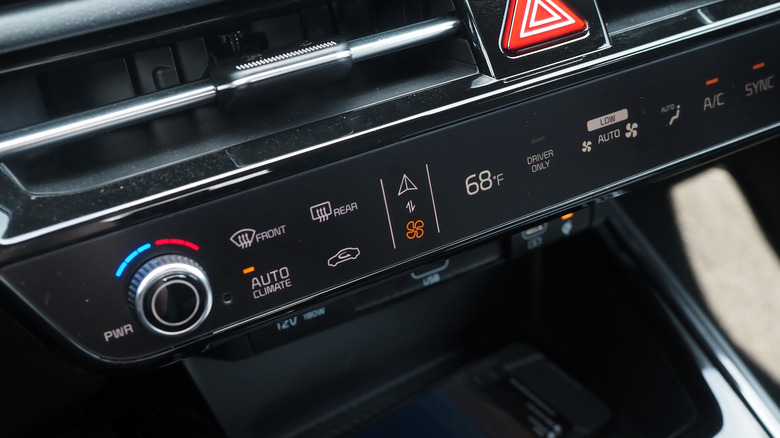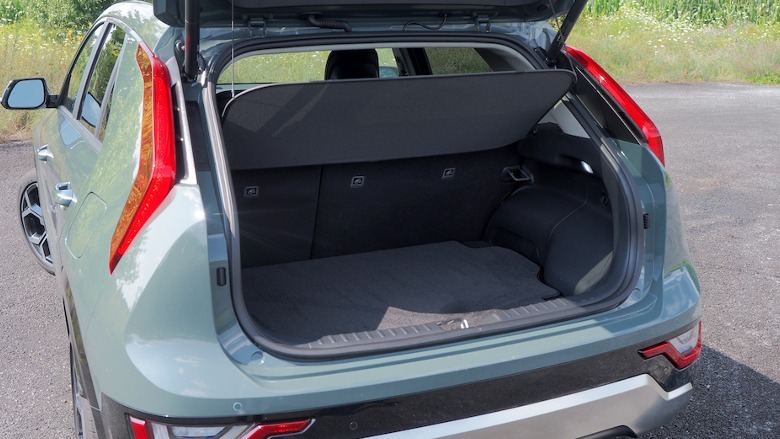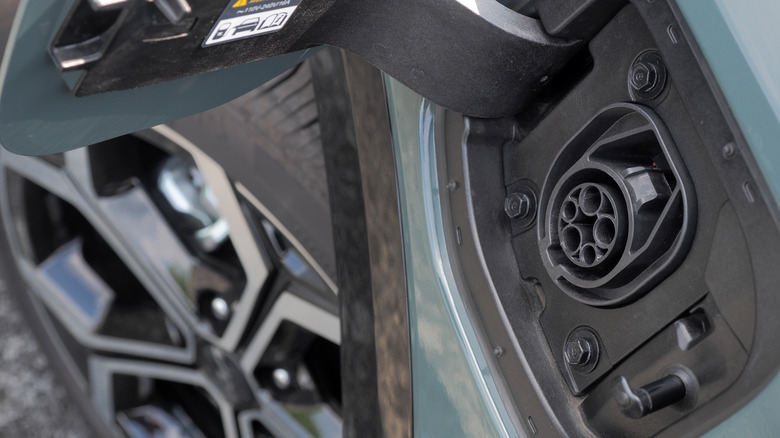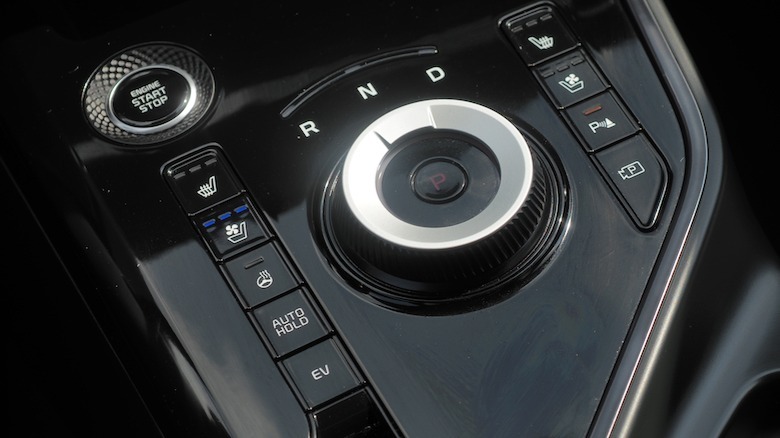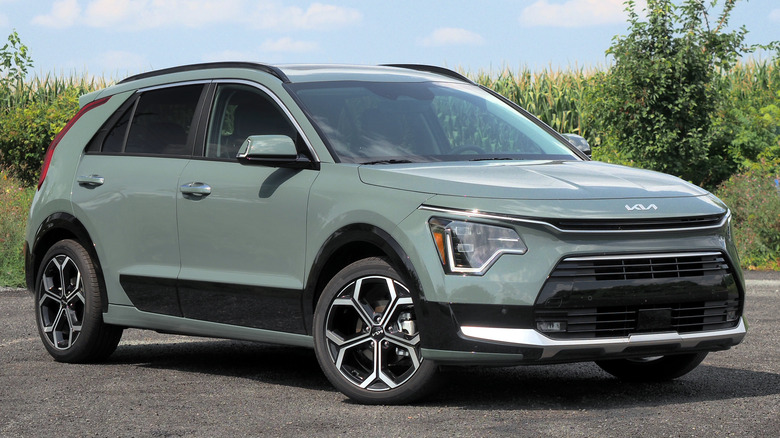2024 Kia Niro Plug-In Hybrid Review: Because EV Isn't For Everyone Yet
- Stylish and practical
- PHEV drivetrain is eager
- Well-equipped in all trims
- Some infotainment and dash control frustrations
- PHEV sacrifices some trunk space
- No AWD option
If the 2024 Kia Niro Plug-in Hybrid was a movie, the pitch would be simple. Usable electrification, in a practical hatchback that looks like a subcompact SUV, to deliver better-than-average fuel economy without making daily driving a bore. What's not to like?
The world might be headed in the direction of fully-electric vehicles, but — whether for reasons of infrastructure, driving demands, price, or general skepticism — not every new car owner is ready to jump aboard. Kia, in a welcome — but still fairly rare — move, covers all the electrified bases with the second-generation Niro.
Most affordable is the Niro Hybrid (from $26,940) which has a mild-hybrid gas engine. It's a simple play to boost economy, much in the same way that the Toyota Prius helped make mainstream. Arguably key is that owners needn't think about plugging in to recharge, since the hybrid system generates power from things like braking.
It's a hatchback that looks like a small SUV
At the other extreme is the Niro EV (from $39,600). It's fully electric, offering up to 253 miles on a charge, and the most expensive of the Niro trio. Certainly, for those ready to give up gas altogether, the Niro EV is one of the most affordable ways to go electric.
The Niro Plug-in Hybrid (from $34,390) slots in-between. Like the cheapest Niro, it still has a gas engine. However, it's paired with a beefier electric motor and larger, 11.1 kWh battery, so that it can drive up to 34 miles on EV power alone. Combine that with a full tank of gas, and the EPA says you should be able to drive up to 510 miles.
Regardless of power source, the 2024 Niro looks handsome from most angles. The combination of horizontal lights and chrome strips in the grille, plus gloss black cladding around the wheels, bumpers, and sides, all work nicely with Kia's fairly subdued color options. While it may borrow SUV styling cues, though, the 6.3 inches of ground clearance make clear that this is no off-roader.
Perkier than the numbers suggest
While effectively having two drivetrains does increase complexity, there's still a lot to be said for plug-in hybrids. For a start, the reassurance of being able to add range simply by pulling in at a gas station is a big deal, to those tempted by EVs but wary of getting stranded away from a charger. With daily car use in the U.S. clocking in at around 39 miles, on average, in theory the Kia's electric-only range could cover the majority of that driving.
Electrification also amplifies the Niro Plug-in Hybrid's performance, which on paper might not sound particularly thrilling. The 1.6-liter gas-electric drivetrain musters 180 horsepower and 195 lb-ft of torque, all routed through the front wheels. Kia, unsurprisingly, doesn't talk about 0-60 mph speed, but the electric motor's instant application of torque leaves the little hatchback pleasingly perky in urban driving.
No, this isn't going to give an EV6 GT (or even a regular EV6) any real competition — and nor does Kia offer an all-wheel drive option for the Niro — but it's all perfectly adequate and doesn't feel breathless on the highway, either. Hitting the EV button locks the PHEV into electric-only mode, at least for as long as you have battery remaining, while there are two drive modes. Eco prioritizes gas-sipping though without making the Kia painfully sluggish; Sport makes it noticeably nippier.
Reasonably roomy and well-equipped
Kia's cabin is spacious enough, given the Niro's exterior dimensions. The PHEV is only offered in EX and SX Touring trims, skipping the base LX of the regular hybrid, and so even in its cheapest form it's reasonably well-equipped. Dual-zone climate control, a 10.25-inch infotainment touchscreen, remote start, power-adjustable driver's seat, from seat heating, blind spot warnings, rear parking sensors, and Highway Driving Assist (HDA) combining adaptive cruise control and lane-centering are all standard.
The SX Touring (from $40,140) swaps the 16-inch alloy wheels for 18-inch versions, adds a power sunroof, power tailgate, Harman Kardon audio system, front seat ventilation, a heated steering wheel, LED ambient lighting, and front parking sensors. Both trims have emergency braking with junction-turning detection, rear cross-traffic collision-avoidance assist, lane keeping and following assist, and auto high-beams.
Somewhat cunningly, Kia's instrument cluster looks like it's all-digital, but actually only the center section is a display. The rest uses segmented graphics to merely resemble a digital panel, helping keep costs down. Space in the front is ample, though rear legroom suffers a little given the overall dimensions.
The compromises
For all that Kia gets right about the dashboard, there are still some obvious frustrations. Buttons for climate and multimedia sharing the same control strip is an ergonomic blunder, the touch-sensitive key to toggle between them having no physical distinction so you need to look down to hit it each time. More than once, I went to turn down the volume only to inadvertently crank the climate control to low.
Then there's the wired Apple CarPlay and Android Auto support, with wireless connectivity conspicuous by its absence (despite the PHEV getting a wireless phone charging pad as standard). Instead you'll need not only a cable, but one with a USB-A plug. Kia's other charging ports, as in the 2024 Telluride, are USB-C, but the data connection is still old-school.
With 19.4 cu-ft of space normally, expanding to 54.6 cu-ft with the rear seats folded, the Niro PHEV's trunk is decent. If toting bags is a priority, though, the mild hybrid does offer more space: more than 3 cu-ft extra with the seats up, and over 9 cu-ft with them down. Blame the larger battery for that difference.
Which Niro is the right Niro?
Figuring out which Niro is the right Niro for you could end up involving math. If you're consistent about plugging in — a Level 2 charger, as you might have installed in a home garage, will top up the Niro PHEV's battery in just shy of three hours, although it's worth noting you can't use public DC fast chargers — then according to Kia and the EPA you could see 108 MPGe.
The gas engine alone is rated for 48 mpg combined. In my own, mixed driving, it took serious restraint to get anywhere near that. If you do, you're looking at an annual fuel cost of $850, based on the EPA's calculations: more than the $650 of the Niro EV, but less than the $1,050 of the Niro Hybrid.
That doesn't take into account the greater upfront cost of the PHEV and EV, of course. A Niro EX starts at $29,640, a nearly $5k delta between the comparable plug-in hybrid version. It'd take a lot of gas station fill-ups to close that gap.
2024 Kia Niro Plug-in Hybrid Verdict
The truth of it is that the economy aspect of the 2024 Niro Plug-in Hybrid is only part of its charm, and its reason for existence. Like other PHEVs it's a stepping stone into electrification, a way to coax people away from internal combustion. However, it's also about tapping some of the broader talents of EVs — like snappier acceleration and quieter driving — without the cost (or lingering compromises) of a fully-electric vehicle.
On that basis, it's tough not to fall for the Niro Plug-in Hybrid's appeal. It feels more upscale than its price tag or footprint might suggest, looks distinct without being too outlandish, and comes loaded with most of the active safety tech modern drivers expect. Those looking solely for gas savings should probably opt for a cheaper Niro hybrid and skip plugging in, but if the idea of going electric appeals yet you're not quite ready for the reality, Kia's PHEV straddles ICE and EV nicely.
